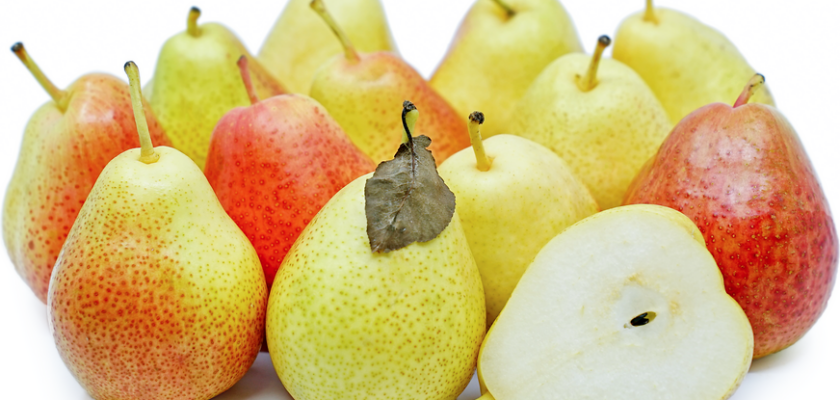Forelle pears, often recognized for their petite size and distinct appearance, offer a sweet and crisp taste. If you’re interested in purchasing Forelle pears, here’s a comprehensive buyer’s guide to help you make the best choices:
- Appearance: Forelle pears are visually appealing with unique markings and colors. They are small to medium-sized pears with an ovate shape. The skin is thin and smooth, featuring a bright yellow or green base color with vibrant red speckles or blush covering the majority of the surface. The speckles often resemble the skin of a trout, which is where the name “Forelle,” meaning “trout” in German, originates.
- Texture: Forelle pears are known for their fine and crisp texture. The flesh should feel firm to the touch but give slightly when gently pressed.
- Ripeness: Forelle pears are best enjoyed when they are fully ripe but still firm. Gently press near the stem: If it gives slightly without being mushy, the pear is ripe. Avoid pears that are too hard or overly soft, as they may lack flavor or be overripe.
- Color: Look for Forelle pears with vibrant colors, including a mix of green, yellow, and red hues. The more pronounced and even the red speckles are, the better the indication of ripeness and sweetness.
- Aroma: Forelle pears may not have an intense aroma like some other pear varieties, but a subtle, sweet scent near the stem can suggest ripeness.
- Storage: Once Forelle pears reach your desired level of ripeness, store them in the refrigerator’s crisper drawer to prolong their freshness. Keeping them at a slightly cooler temperature can help maintain their texture and flavor.
- Culinary Uses: Forelle pears are versatile and offer a range of culinary possibilities:
-Snacking: Enjoy them as a convenient and sweet snack on their own.
-Salads: Slice or cube Forelle pears to add a crisp and refreshing element to salads.
-Cheese Platters: They pair well with various cheeses, from tangy goat cheese to milder options like brie.
-Garnishes: Use sliced Forelle pears as a garnish for desserts, pastries, and savory dishes. - Pairing: Consider pairing Forelle pears with nuts like almonds or walnuts for added texture and flavor. They also work well with honey, cinnamon, and mild spices.
- Season: Forelle pears are typically available in late summer through early winter, with their peak season in the fall months.
- Varieties: Forelle pears are a specific variety with consistent characteristics. Their distinct appearance sets them apart from other pear types.
When selecting Forelle pears, focus on their vibrant color, firmness, and uniform ripeness to ensure a delightful eating experience. These charming pears are a delightful addition to your culinary endeavors, adding a touch of sweetness and crunch to a variety of dishes.
